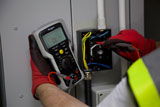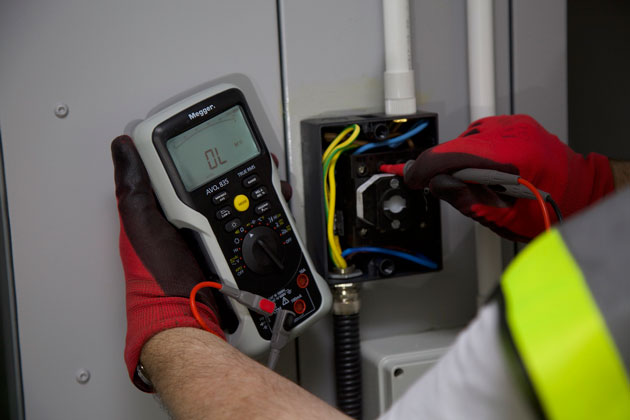A a non-contact voltage detector with switchable sensitivity is exactly what’s needed to alert you of a cable's presence even if it’s buried in a wall or hidden in some other way.

When it comes to finding hidden cables, there’s no doubt that a non-contact voltage detector is a very convenient tool.
Bring one of these little devices close to a live cable, even if it’s buried in a wall or hidden in some other way, and the detector will buzz to alert you to the cable’s presence. If necessary, you can then move the detector to track the route of the cable. At least, that’s what should happen.
In reality, non-contact voltage detectors are often overly sensitive, which means they start indicating when they’re tens of centimetres away from the live cable. This makes it difficult to pinpoint the cable’s exact location and it makes cable tracking almost impossible, as the indication from the detector occurs over such a wide area.
The solution is surprisingly simple – a non-contact voltage detector with switchable sensitivity. And that’s exactly what’s provided in Megger’s new AVO830 and AVO835 multimeters. When low sensitivity is selected, the detector only operates when it’s within a few centimetres of a live cable. This means that cable positions and routes can be determined accurately.
When high sensitivity is selected, the instrument can detect live cables at a much greater distance, which is very useful when you’re trying to find cables that are buried deep in walls or floors. In short, the switchable sensitivity provided by the non-contact voltage detector function in Megger’s new multimeters provides the best of both worlds.
A brief reminder is, however, needed. Even the best non-contact voltage detector must NEVER be used to prove that a circuit is dead. Correct procedures for isolation and proving isolation must be followed, and these procedures will always involve using an approved form of two-wire tester and making a direct connection to the circuit under test.

